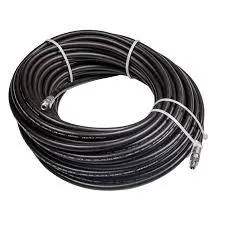Steps to Fix a Leak in Your Power Steering Hose
How to Repair a Power Steering Hose Leak
Power steering is a crucial component of modern vehicles, providing drivers with the ability to steer their cars effortlessly. However, issues such as a leaking power steering hose can lead to significant problems, including loss of steering ability and damage to other components of the steering system. If you’ve noticed a fluid leak under your vehicle or experienced difficulty when steering, it might be time to address a power steering hose leak. This article will guide you through the steps to repair it.
Understanding Power Steering Hose Leaks
The power steering system in your vehicle relies on hydraulic fluid to assist in steering. The hoses in this system can degrade over time due to factors like heat, age, exposure to road grime, and physical wear. Symptoms of a leaking power steering hose include noticeable puddles of fluid, whining noises when turning the steering wheel, and a stiff steering wheel.
Tools and Materials Needed
Before beginning the repair, gather the necessary tools and materials - Replacement power steering hose - Hose clamps (if needed) - Wrench set - Socket set - Screwdrivers - Fluid catch bucket - Rags or towels - Power steering fluid
Step-by-Step Repair Process
1. Safety First Begin by ensuring that your vehicle is parked on a level surface. Turn off the engine and let it cool down. Engage the parking brake and wear safety goggles and gloves for protection.
2. Locate the Leak Inspect the power steering hoses for signs of fluid accumulation or cracks. It’s often helpful to wipe the hoses down with a rag to identify the exact location of the leak.
how to repair power steering hose leak

3. Drain the Fluid Place a fluid catch bucket under the power steering reservoir. Use a syringe or a pump to remove any excess fluid from the reservoir to avoid spills.
4. Disconnect the Damaged Hose Using the appropriate wrench, loosen the clamps or bolts securing the damaged hose to the power steering pump and the steering gear. Carefully remove the hose from both connection points. Be prepared for some remaining fluid to leak out.
5. Install the New Hose Take the replacement power steering hose and connect it to the steering gear first, tightening the clamp or bolt securely. Then, connect the other end to the power steering pump, ensuring a tight seal.
6. Replenish the Fluid With the new hose in place, refill the power steering fluid reservoir with the appropriate type of fluid specified in your vehicle’s manual. Be cautious not to overfill.
7. Check for Leaks Start the vehicle and allow it to run for a few minutes. While the engine is running, turn the steering wheel from lock to lock several times. This action helps to bleed any air out of the system. Inspect the new hose for any signs of leaks while the engine runs.
8. Test Driving Once you’re confident that there are no leaks, take the car for a short test drive. Pay attention to the steering feel and listen for any unusual noises.
Conclusion
Repairing a power steering hose leak can be a straightforward task with the right tools and some basic mechanical knowledge. However, if you’re not comfortable performing this repair yourself or if the issue persists after replacement, it’s advisable to consult a professional mechanic. Regular maintenance and early detection of leaks can help ensure the longevity and proper functioning of your vehicle's power steering system, making your driving experience safe and enjoyable.
-
Ultimate Spiral Protection for Hoses & CablesNewsJun.26,2025
-
The Ultimate Quick-Connect Solutions for Every NeedNewsJun.26,2025
-
SAE J1401 Brake Hose: Reliable Choice for Safe BrakingNewsJun.26,2025
-
Reliable J2064 A/C Hoses for Real-World Cooling NeedsNewsJun.26,2025
-
Heavy-Duty Sewer Jetting Hoses Built to LastNewsJun.26,2025
-
Fix Power Steering Tube Leaks Fast – Durable & Affordable SolutionNewsJun.26,2025

